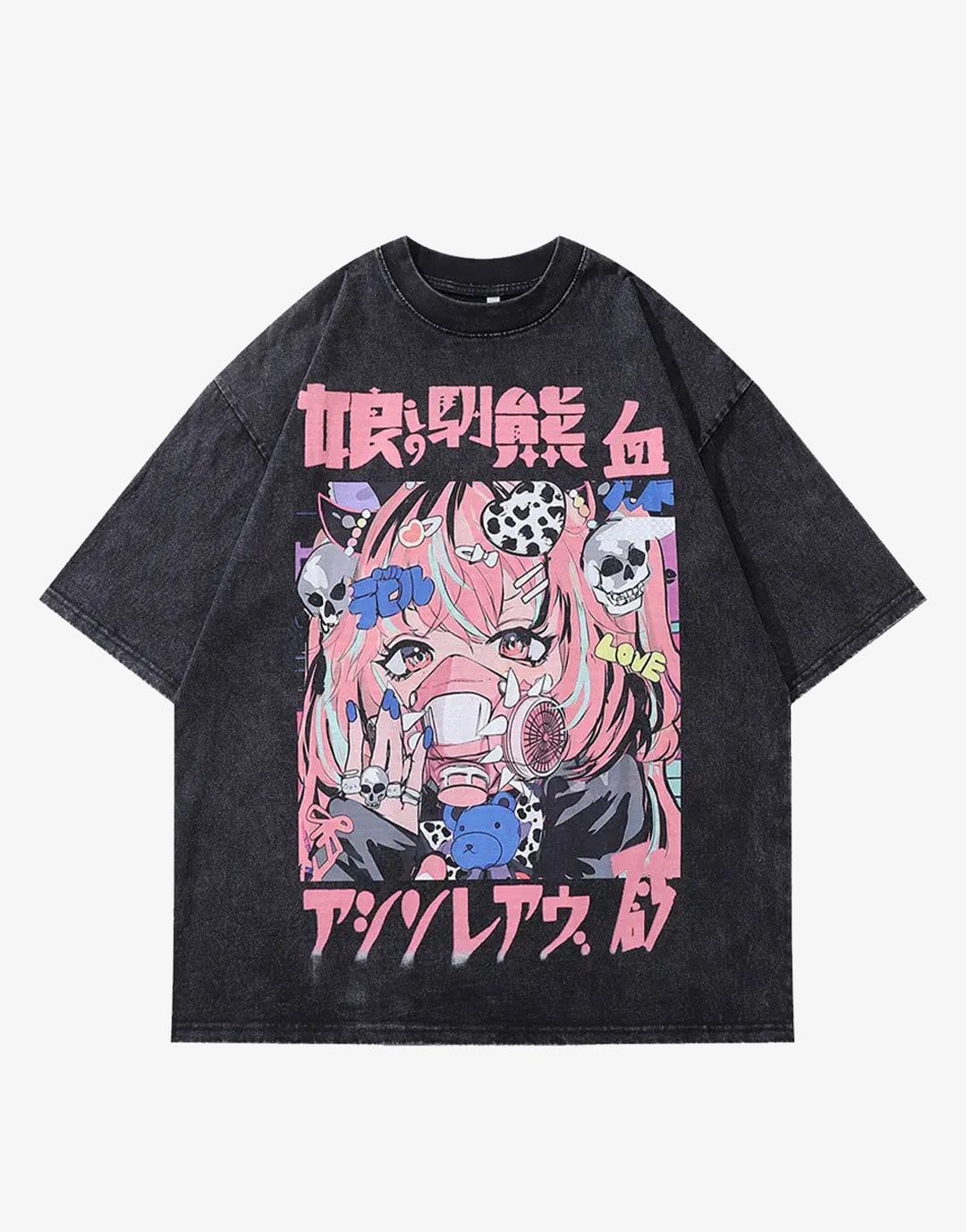
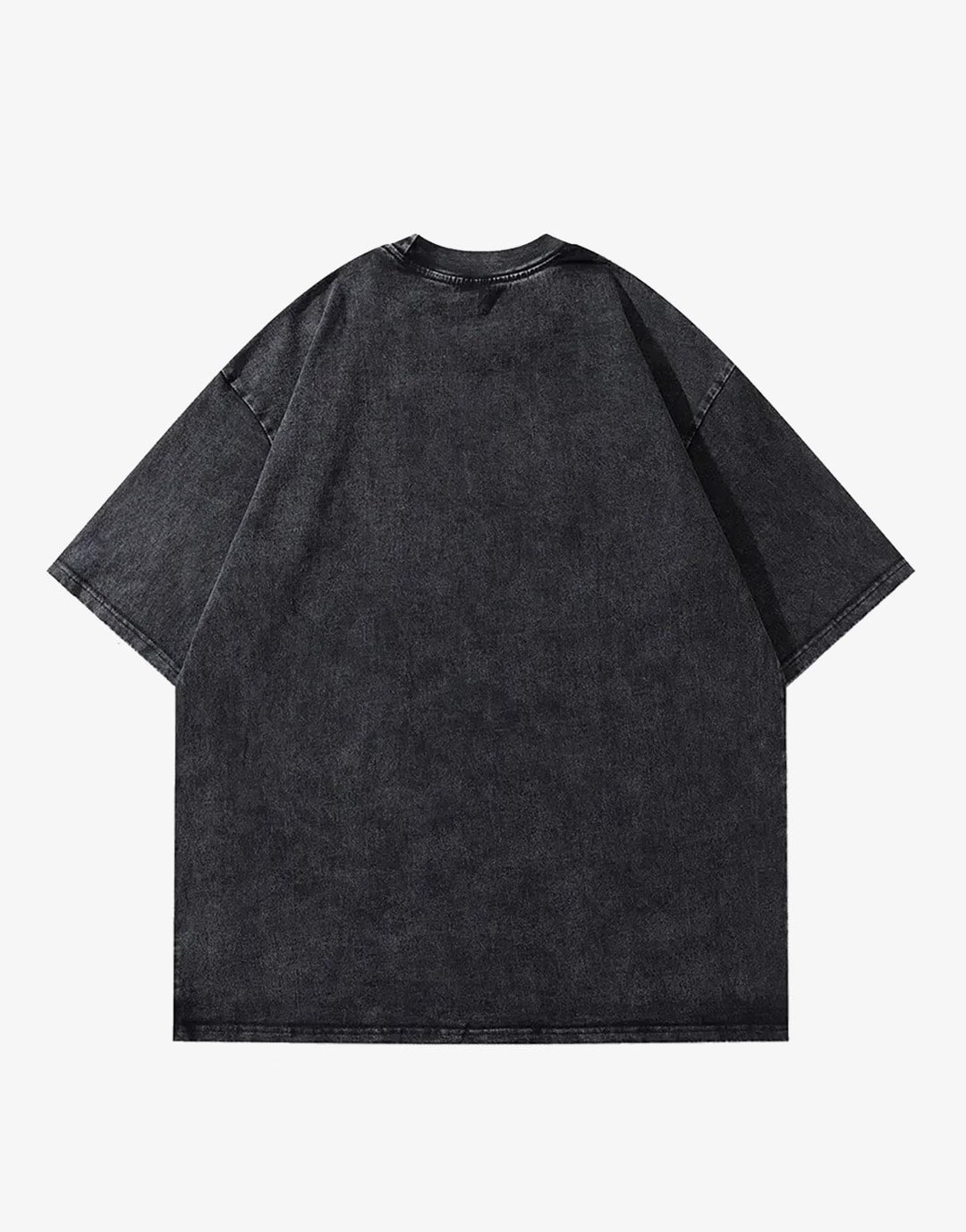
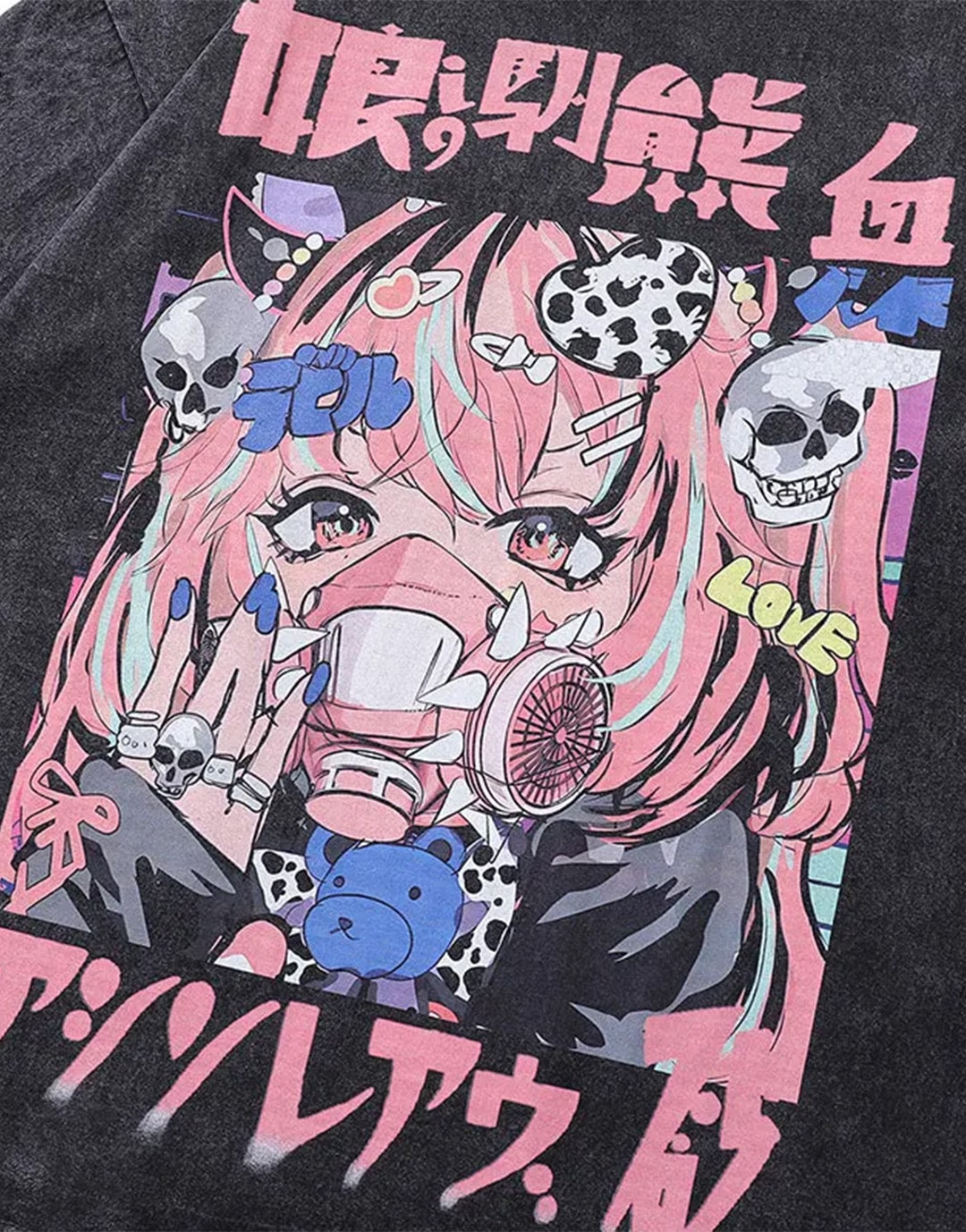
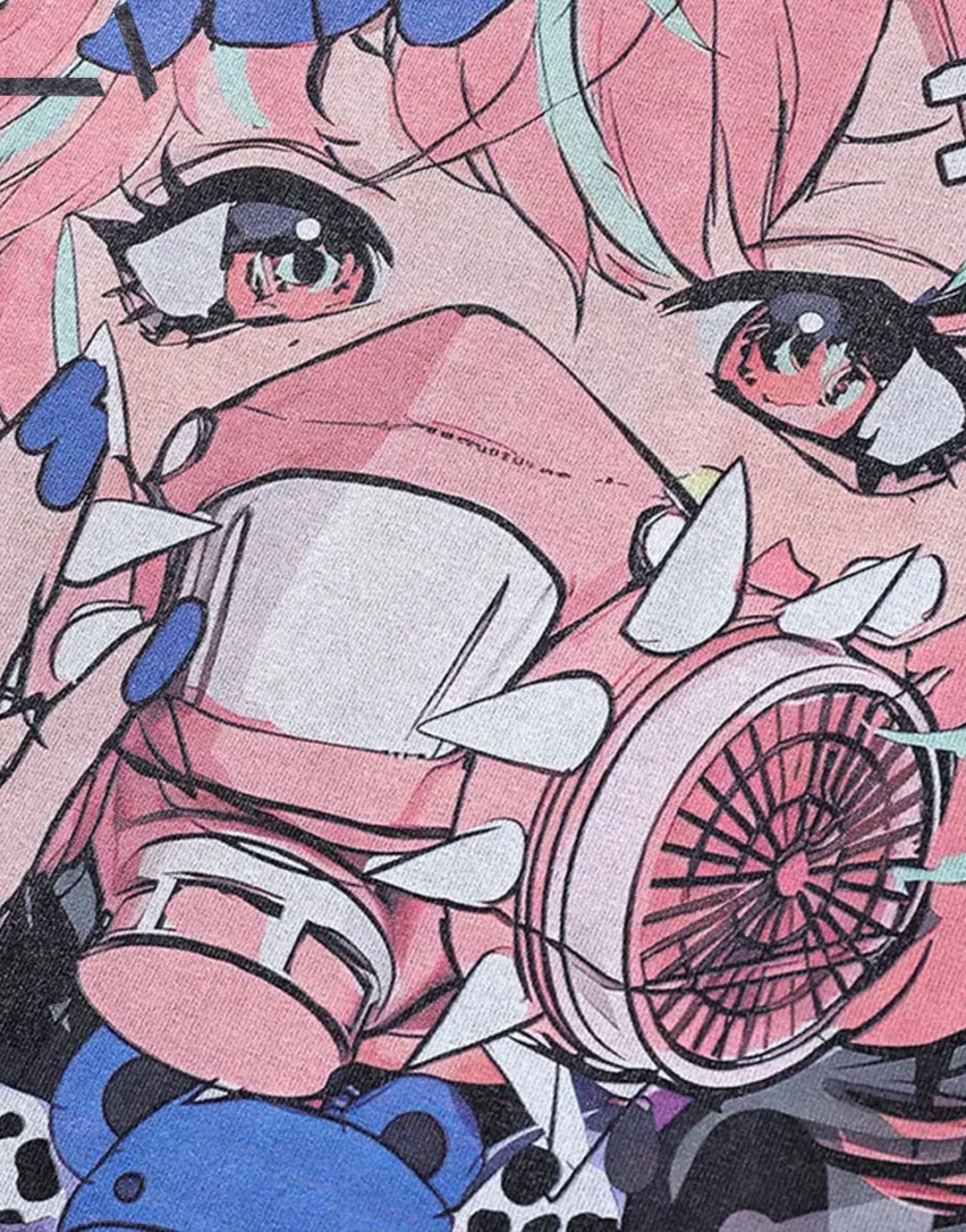
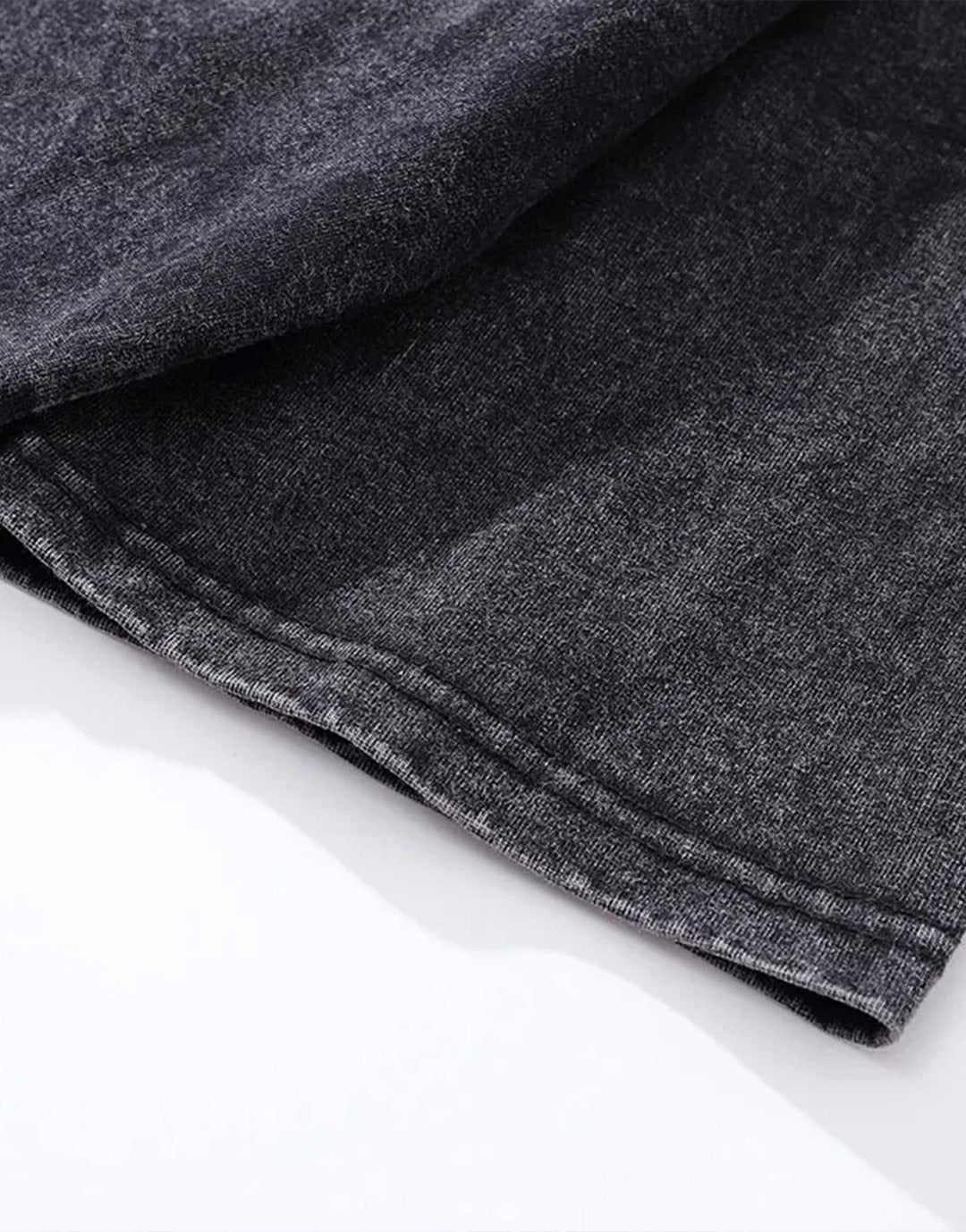
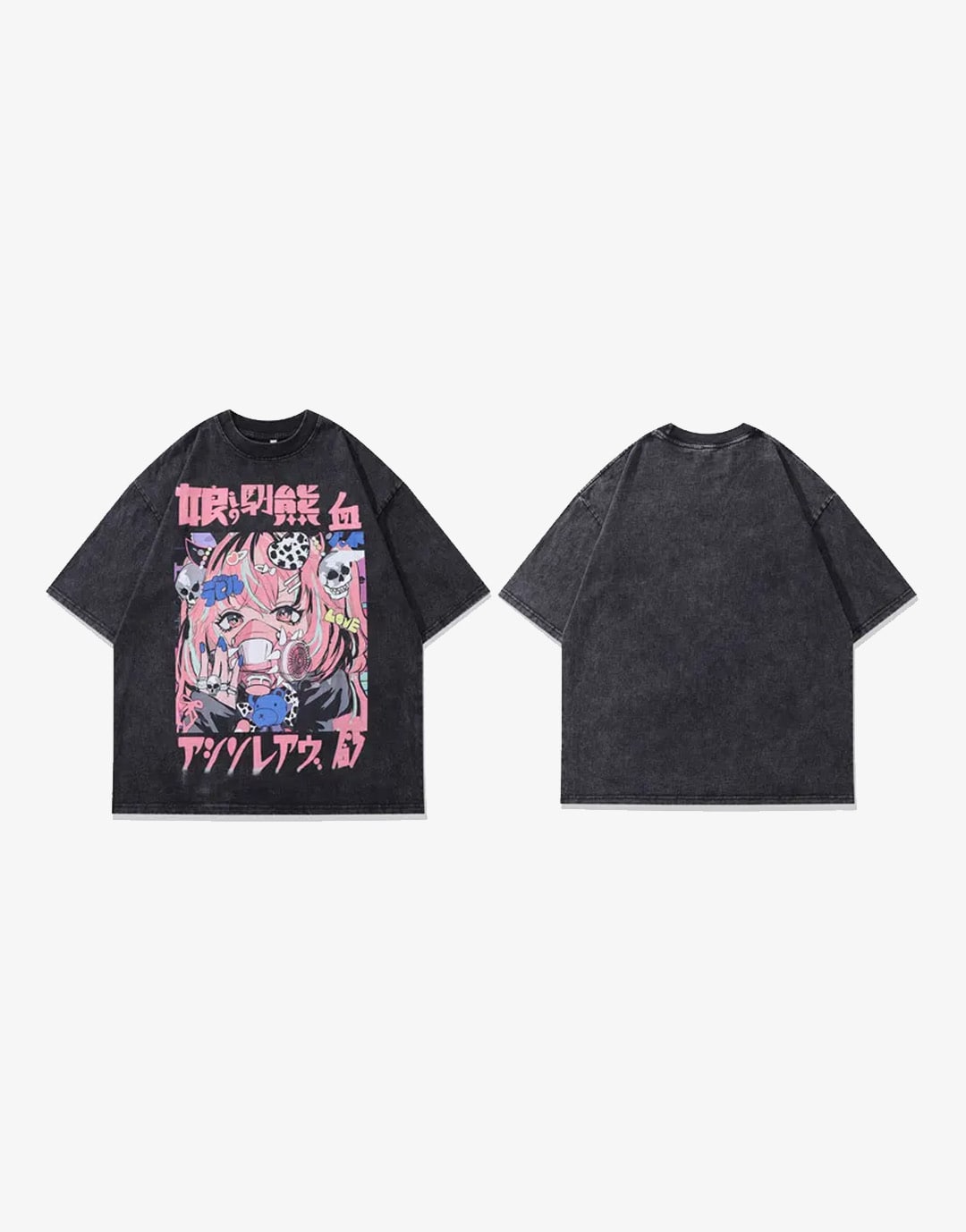
Harajuku Japanese Shirt
Size



shipping
Return
payment
In the fluorescence of Tokyo's sidewalks, where rebellion once danced between storefront reflections and teenage daydreams, Harajuku fashion was never just an aesthetic—it was a declaration. A mirror held up to a world spinning too fast, a refuge for those who refused to blur into the grey.
Today, as the clock ticks back to the early 2000s, the Harajuku spirit of the year 2000 is reawakening, not as imitation, but as reincarnation. From cyberpunk nightscapes to digital intimacy on TikTok loops, these garments are worn simultaneously as armor and diary pages. Indeed... They glow with memory, are coded and charged with the urgency of self-construction.
Throughout this article, you'll discover what's inside the Japanese Harajuku shirt: having emerged from this lineage with quiet strength, its breathable cotton becomes more than a fabric, it becomes an atmosphere. As a graphic tee buzzing with the static electricity of retro VHS dreams, this whispering garment of subcultures unafraid to mix glitter and daring has short, full and deliberate sleeves, falling like punctuation marks on a sentence uttered in skateparks and slow-motion rave halls. If you're curious enough this garment will be , and it doesn't just dress you, it transmits you. Its preserved vintage style echoes analog youth, reprogrammed for a generation that captures everything on screen but yearns for tactile truth.
No hood here. No need for concealment. Just a round collar, pure as a spoken truth. Beneath this apparent simplicity lie lines and patterns that repeat like mantras or modem tones. In its minimalist approach, this garment doesn't retreat—it projects. Worn across genders and seasons, it remains everyday without ever being ordinary, floating between hip-hop streetwear and poetic resistance, asking only that you move through the world with intention and contradiction.
The Anime Underground Surfaces
Step closer to decode the visual language that elevates this piece beyond a mere fashion statement to become a cultural artifact. Beneath the faded black denim texture lies a visual manifesto—a pink-haired anime heroine gazing through a respirator mask, surrounded by skulls and kawaii-horror iconography.
The Japanese characters printed in electric pink don't simply decorate; they encrypt. This isn't random aesthetic sampling but a deliberate fusion of otaku culture with streetwear sensibility, where dystopian anime narratives become wearable rebellion. In an age of algorithmically sorted identities, this shirt disrupts with calculated chaos—a garment that refuses digital categorization while paradoxically thriving on social feeds.
From Takeshita Street to Global Wardrobes
What began as localized expression in Tokyo's narrow alleyways now transcends geography, carried by digital winds across continents. The oversized silhouette—intentionally roomy and unrestricted—bears witness to fashion's cyclical nature, where the anti-fit of 90s skateparks meets the precise cut of modern tailoring.
Each thread connects wearers to a legacy of sartorial disruption that began when Japanese youth first remixed global influences into something entirely new. This isn't trend-chasing but archaeology—excavating subcultural artifacts and reanimating them with contemporary relevance.
Tactile Rebellion in a Frictionless World
In a digital landscape where experiences glide with touchscreen smoothness, this cotton garment introduces necessary friction. The weight of the fabric against skin—substantial yet breathable—serves as analog counterpoint to virtual existence. Its feel cannot be replicated through screens; its gradual fading cannot be filtered or edited. When algorithms predict and platforms homogenize, the physical presence of this Y2K shirt becomes radical—a deliberate choice to exist beyond the parameters of digital curation, while paradoxically becoming infinitely shareable.
The wearer doesn't just don fabric but dons perspective—becoming simultaneously walking exhibition and exhibitionist, observer and observed. This isn't just fashion. It's cultural synthesis materialized, ready to write its next chapter across your shoulders.
From Jingumae to Street Runway: Harajuku's Early Fashion Roots
Before Tokyo became the global epicenter of sartorial rebellion, Harajuku was a quiet residential district overshadowed by Shibuya's post-war reconstruction. It wasn't until the 1970s that the neighborhood's narrow alleys and cracked pavements began attracting young creatives seeking affordable spaces to experiment with identity beyond the rigidity of Japanese social structures. Here, Western imports collided with traditional craftsmanship, creating a fashion ecosystem unbound by conventional rules or commercial expectations.
By the late 1980s, Harajuku had transformed from geographical location to cultural concept – a decentralized laboratory where weekend fashion tribes gathered beneath Yoyogi Park's zelkova trees. These groups traded influences and invented new visual languages that would later infiltrate global consciousness through grainy photographs and international visitors who returned home forever changed by what they had witnessed.
Through the Lens of the 90s: Layered Chaos, Youth Codes, and Girl Gangs
In the neon-saturated twilight of late 90s Tokyo, where digital dreams first collided with analog realities, the Harajuku Japanese Shirt emerged not as a simple garment, but as crystallized rebellion. These pieces weren't just Y2K accessories – they were portable portals, simultaneously reflecting and protecting their wearers from a world accelerating toward unknown futures. Initially sported by cyber-punk devotees who gathered in back-alley electronic shops, these distinctive frames captured the paradoxical spirit of an era balanced between millennium anxiety and techno-optimism.
When Analog Turned Digital: Harajuku Meets the Internet and Y2K Explodes
What began as protection rapidly evolved into projection – a relationship that defined the meteoric cultural ascension of the Harajuku Japanese Shirt. While Western fashion houses still clung to minimalism, Tokyo's street style pioneers were layering visual references through their clothing choices, creating identities that flickered between visibility and anonymity with each tilt of the head. As a result, this clothing piece is widely :
- Cultural Transformation: Protection evolved into projection, defining the shirt's meteoric rise
- Layered Visual Identity: Tokyo creators stacked references in their clothing choices
- Fluid Expression: Identities flickered between visibility and anonymity with each styling choice
- Distinctive Silhouettes: Forms both angular and fluid simultaneously challenged conventional design
- Media Proliferation: Appearances in music videos and underground magazines expanded influence
- Global Transmission: From localized expression to worldwide aspiration through digital channels
- Digital Discovery: Through pixelated dial-up connections and imported fashion magazines
- International Emulation: Youth from Seoul to Stockholm recreated tomorrow's vision
- Transcendent Appeal: The aesthetic crossed borders and cultures despite imperfect translation
Their distinctive silhouettes – simultaneously angular and fluid – appeared in music videos and underground fashion magazines, thus catapulting their aesthetic from localized expression to global aspiration. The translation was imperfect but electric: through pixelated dial-up connections and imported fashion magazines, youth from Seoul to Stockholm began emulating a vision of tomorrow first glimpsed through these distinctive creations.
From Tokyo's Side Streets to Global Screens: The Harajuku Japanese Shirt as a Y2K Time Capsule
Today's renaissance of the Harajuku Japanese Shirt represents more than cyclical fashion; it embodies our collective renegotiation with technological optimism. These garments, with their distinctive fusion of futuristic silhouettes and now-vintage reference points, allow contemporary wearers to simultaneously embrace and critique our hyperconnected reality. The same pieces that once protected ravers from strobing lights now protect digital natives from the constant glare of screens, while also serving as analog antidotes to an increasingly virtual existence.
To conclude our exploration, we note that wearing the Harajuku Japanese Shirt today is to participate in a tactile rebellion. Its breathable cotton weave—a deliberate choice against synthetic alternatives—carries the vintage aesthetic of an era that witnessed the collision of analog and digital worlds. Each graphic print tells a story that algorithms cannot replicate; each thread ages with intention rather than obsolescence. In its simplicity lies its power—a round-necked silhouette that has witnessed decades of cultural transformation yet remains defiantly current.
This isn't simply summer apparel but a wearable time capsule, connecting Tokyo's concrete labyrinths to global consciousness. This japanese oversized shirt serves as both canvas and statement, requiring nothing more than the wearer's own interpretation to complete its meaning. Its cotton remembers—each wash softening not just the fabric but the boundary between eras, between observer and observed.
When you pull this garment over your head, you aren't just getting dressed; you're continuing a conversation that began in those neon-lit alleyways where fashion first learned to speak in code. The shirt doesn't just sit on your skin—it vibrates against it, whispering stories in a language that only the truly present can hear. Wear it, and let the world feel your frequency.
